My awesome trip to the Valley of the Temples in Agrigento
Probably you haven’t heard of Agrigento and that is okay. Neither did I, until my mum told me about this magical place left from our ancient accentors. After finding out about this unbelievable place I searched for ways to get there, especially since I was in Sicily and that city was definitely a must-see.
Agrigento is a city that sits on the south coast of Sicily and was founded around the fifth century before the birth of Christ on a highland overlooking the Mediterranean Sea and Africa. The city was established by Greek colonists and its first name was Akragas named after one of the rivers that were flowing near the city. Akragas went through a lot, especially after the Carthaginians and Romans were fighting for the control over the island until the Romans won and made Akragas theirs along with its Greek population. Then, after the fall of the Roman Empire, lots of kingdoms like the one of the Vandals and Alans and that of the Ostrogoths were trying to take control of the city and the island of Sicily. The city was torn apart during the conquest of the Northern people or as they are mostly known the Vikings that were conquering the southern parts of Europe and settled there.
Eventually, the city fell under the rule of the Bourbons, which were part of the Spanish royal family, which took control of the city for a century. Finally, the city was added to the territory of Italy after the arrival of Garibaldi and remained there until this day.
Agrigento, or Akragas as many would call it, is for sure a city with lots of history and stories to tell. It holds in itself many cultures and its cultural diversity can be seen everywhere. The beauty of the city is absolutely captivating and when I was there I fell in love with it. If you like ancient history, this is for sure a place you should visit if you get the chance to go to the island of Sicily.
During my trip to Agrigento, I visited the Valley of the Temples, which is the most famous tourist attraction there. The Valley of the Temples is a bit further from the city, but it can easily be reached with a city bus that you can get from the central bus station in Agrigento. My trip to the Valley of the Temples lasted for around three or four hours since the archaeological complex is quite huge and full of places for explorations. Thus, if you decide to visit it, make sure that you plan your trip there carefully so that you have enough time for everything there.
The easiest and most reliable way to get to Agrigento from Catania?
The easiest and most reliable way to get to Agrigento from Catania is by bus. The bus ticket costs around fourteen euros each way and can be bought in the ticket office at the central bus station in Catania. The ride takes around two hours and the bus stops at the central bus station Nuova Omniabus in Agrigento.
Once we arrived there we asked at the information desk where we can buy tickets for the buses that were going to the Valley of the Temples. The buses that were going to the Valley of the Temples were number 1, 2 and 3, but we had to go and by the tickets from the nearest kiosk next to the station that was selling coffee and newspapers. The bus ticket cost around two euros and the bus was taking you directly at the entrance of the Valley of the Temples. Thus, in no time I was at the Valley of the Temples.
However, my advice is to always check the timetables of the buses, so that you don’t miss the last one, as in most of the cases the last bus is around six in the afternoon.
The Valley of the Temples Guide
When I arrived at the Valley of the Temples I had to walk a bit inside of the archaeological park, so that I can reach the ticket office. There, the ticket for adults costs ten euros and for people, until the age of 25 years old, it was five euros. Then, I continued walking in the archaeological park on a nice path that was leading me to the first excavations.
Temple of the Dioscuri
The temple of the Dioscuri or the temple of Castor and Pollux is one of the first archaeological excavations that I saw when I entered the park. The Doric temple was built around the fifth century before the birth of Christ and there are only four yellowish Doric columns that were left of the temple along with its ruins spread around. However, the temple of Castor and Pollux, the demi-god brothers that were helping the sailors, was quite fascinating even today with what was left of it.
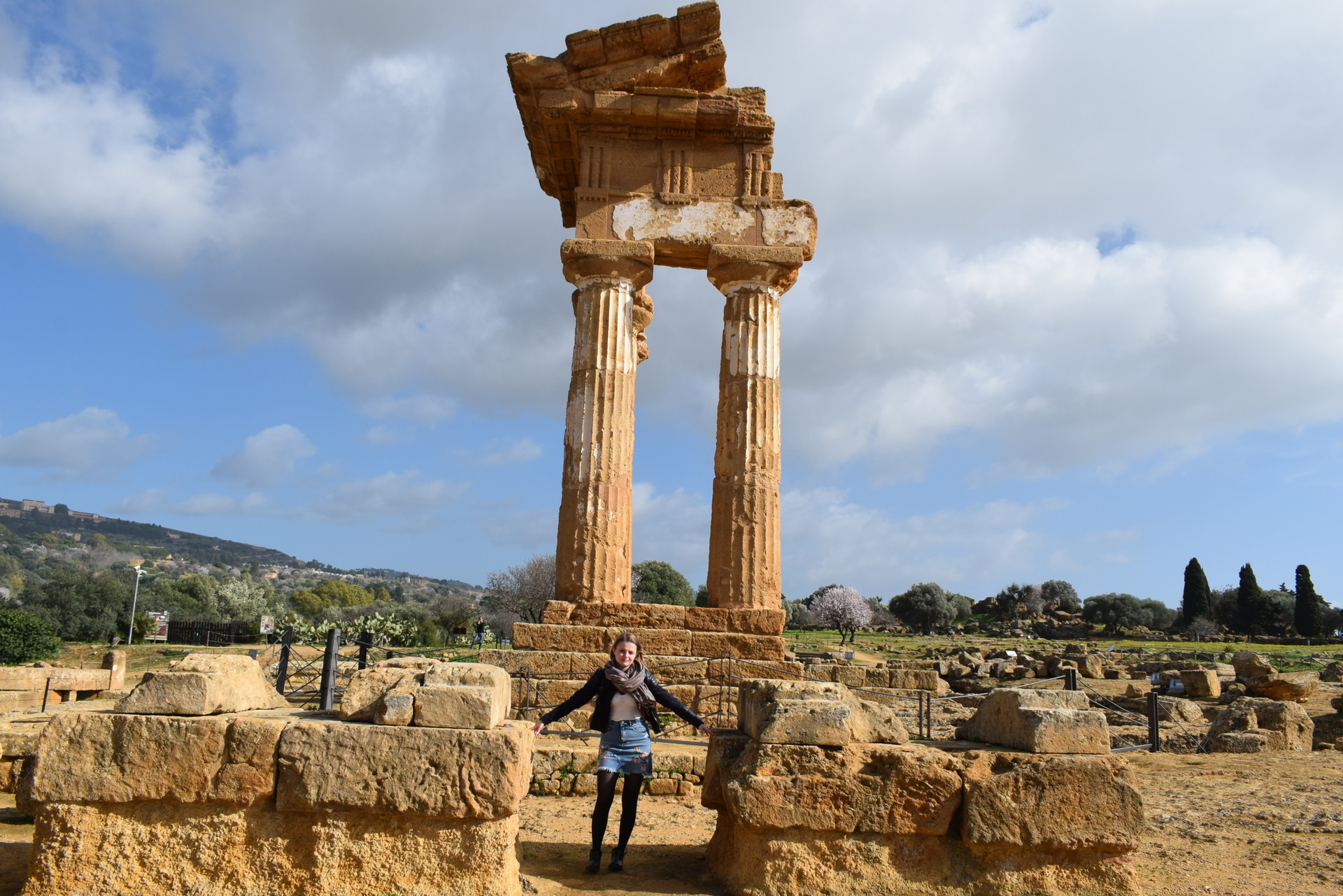
The Telamons and the temple of Zeus
Going a bit further I found the famous temple of Zeus and its telamons, which were referred to as giants or atlantes. The telamons were huge humanlike statues that were holding the temple of Zeus but now were put to lay down on the ground. Each statue is around eight meters high and they were both made to resemble male figures. The statues of the Telamons are representing the defeated Carthaginians, which people wanted to punish by making them hold the temple of their god Zeus.
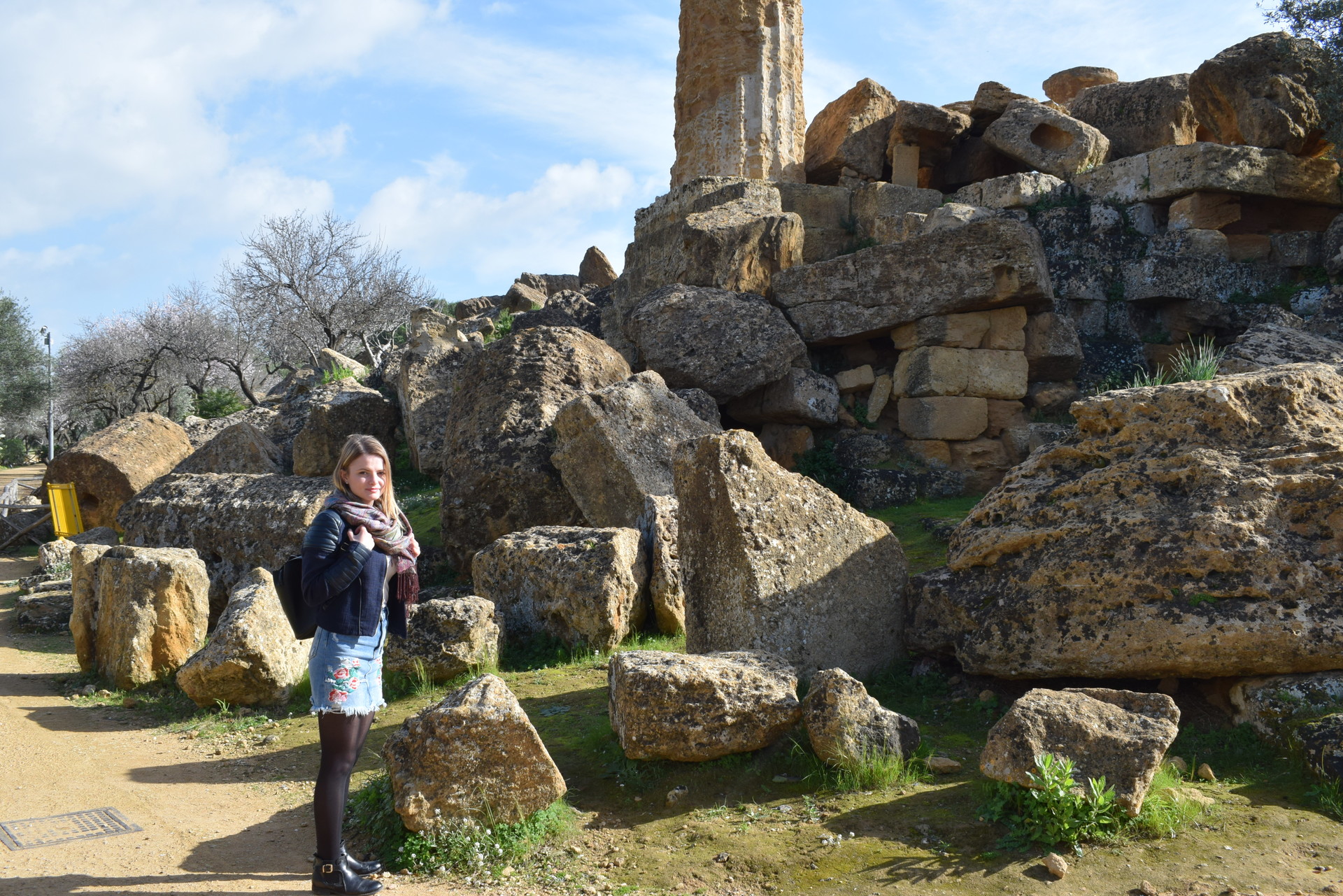
Nowadays, there is not so much left of the temple, but the statues are quite well-preserved and I was able to walk near them and observe them closely. Even though the temple of Zeus is destroyed I was still able to see how huge was the temple. Among the things that were left from the temple were huge Doric columns that were destroyed, arches, capitals and the stairs leading to the entrance of the temple of Zeus. Honestly, this was quite fascinating to look at and even though the temple was destroyed, the size of everything was quite impressive, which suggested that this temple was humongous.
Temple of Heracles
Next to the temple of Zeus was the temple of Heracles, which is the oldest temple of all of the temples in the valley and was built around the sixth century before the birth of Christ. Unfortunately, there is not so much left of the temple, except the huge ruins spread around and eight Doric columns made out of limestone that were quite burned, which suggested for the presence of lots of cultures here that were fighting for these fruitful lands. However, while there it was quite easy to imagine what the temple looked like and how big it was. Thus, it was quite nice to just stare at it for a moment and then to the beautiful vista that was revealed to me of the Mediterranean Sea. Absolutely mesmerizing!
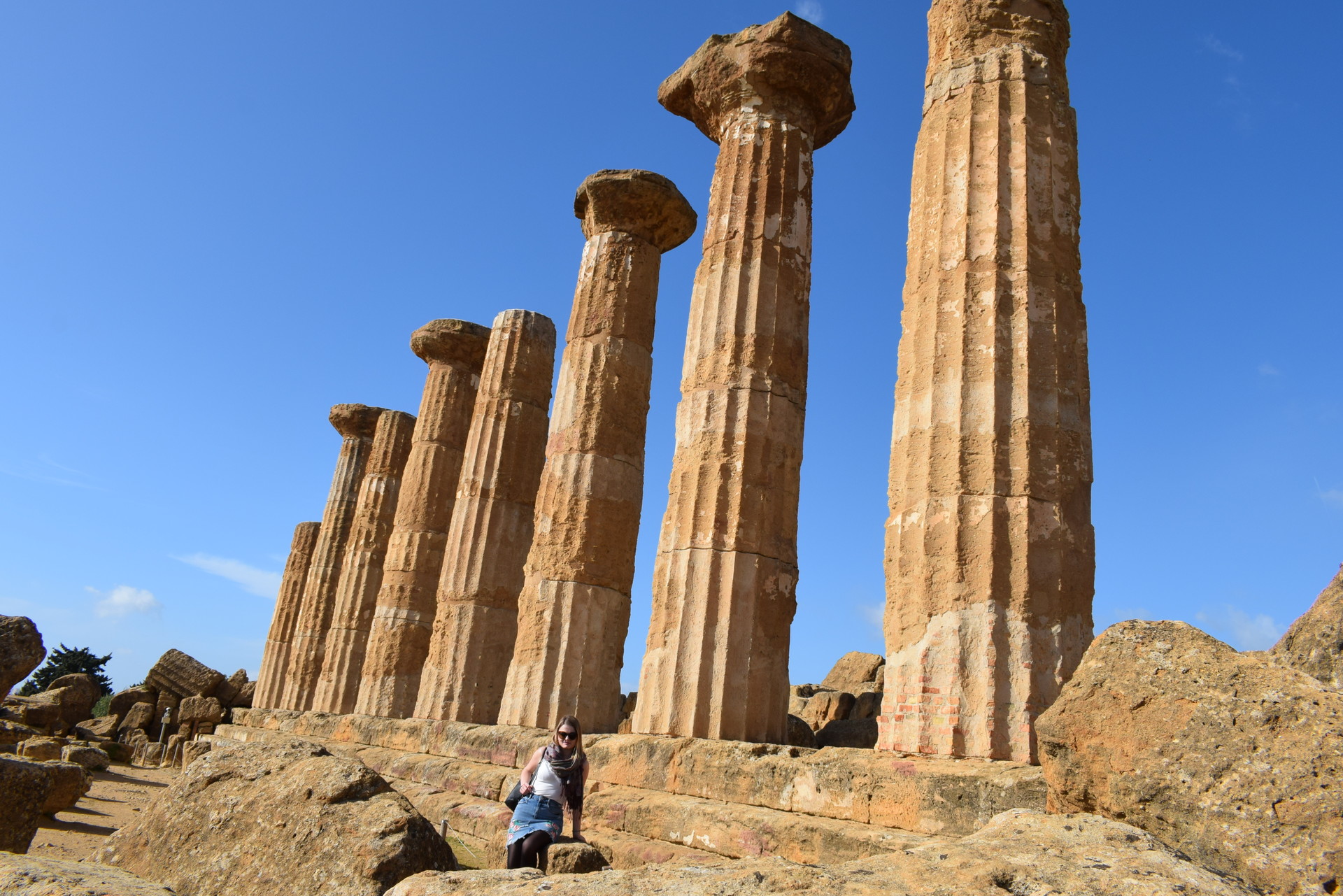
Temple of Concordia
While I was walking up the asphalt street I saw a new house that was not from the ancient Greek period. It was arranged with a nice garden and was closed for visitation, but I found out that it belonged to the and English archaeologist that helped with the excavations and restorations of the site at the beginning of the twentieth century. Then, after walking for a bit I reached the prominent temple of Concordia, which is also very well preserved. The temple of Concordia is one of the biggest temples in the whole ancient world and today it is even in better condition than that of the Necropolis in Athens.
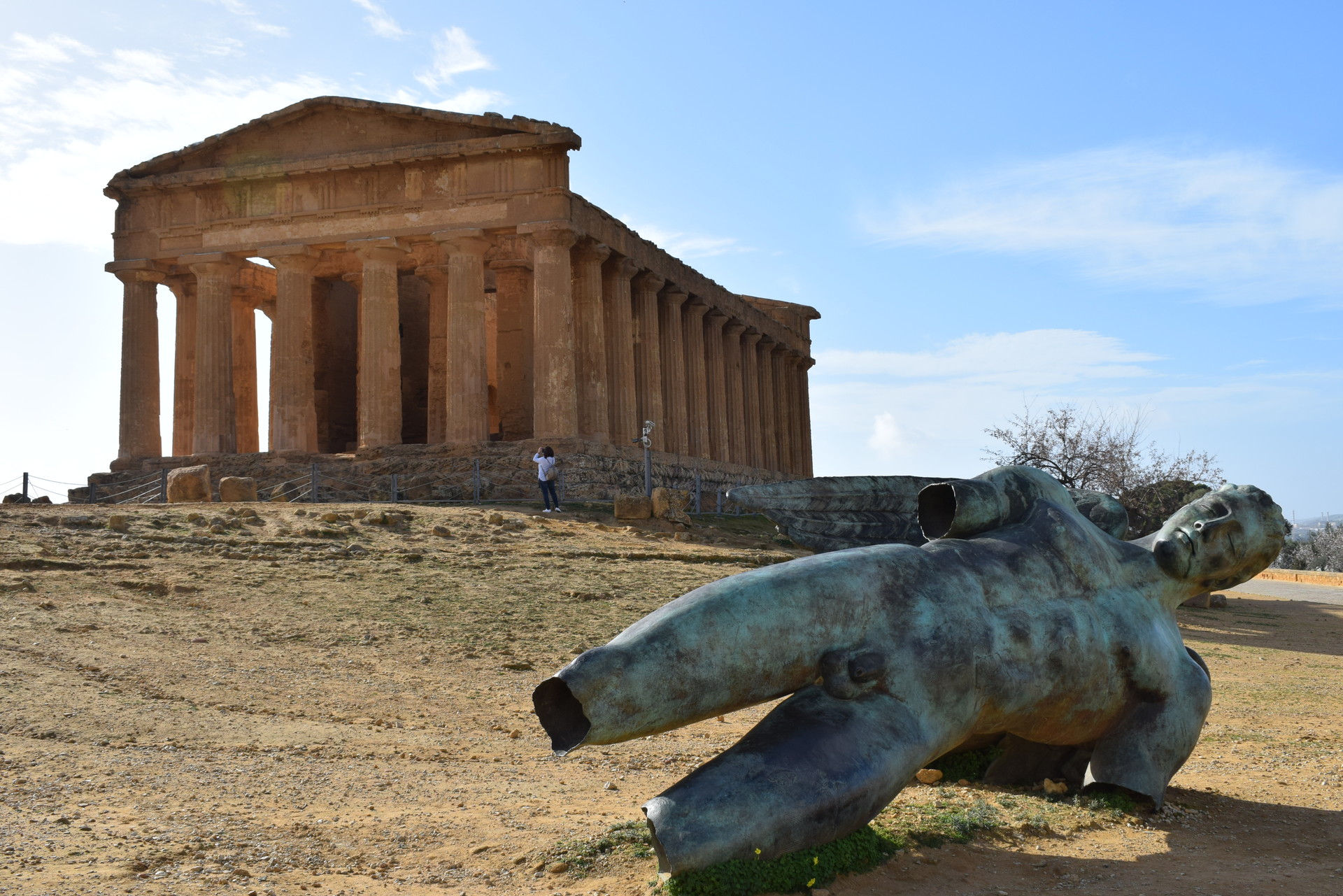
The temple of Concordia or the temple “that was dedicated to the harmony of the people” as it was called was built around the sixth century like the other temples in the Valley of the Temples. However, during the Christianization period in the Roman Empire, the temple was turned into a basilica and dedicated it to the Saints Peter and Paul. During that period there were some changes made to the temple’s arches, tombs were added and its walls were coated in different colours. However, the original outlook of the temple was preserved and I was able to enjoy its magnificence.
Right next to the temple of Concordia there was a very interesting art installation that was representing the fallen Icarus, who as per the legend found Agrigento when he was flying from the island of Crete.
Temple of Juno
After that, I continued walking straight on the path that led me to the temple of Juno or the goddess of marriage. To get to the temple there were ancient stairs that were leading to the top of the hill on which the temple was built. The temple was built around the fifth century, which was a bit later than the rest of the temples in the valley, but withstood the harsh events that were taking place on the island of Sicily. Nowadays, the temple is one of the well-preserved temples in the valley and provides a beautiful view over the south coast of Sicily and the Mediterranean Sea.
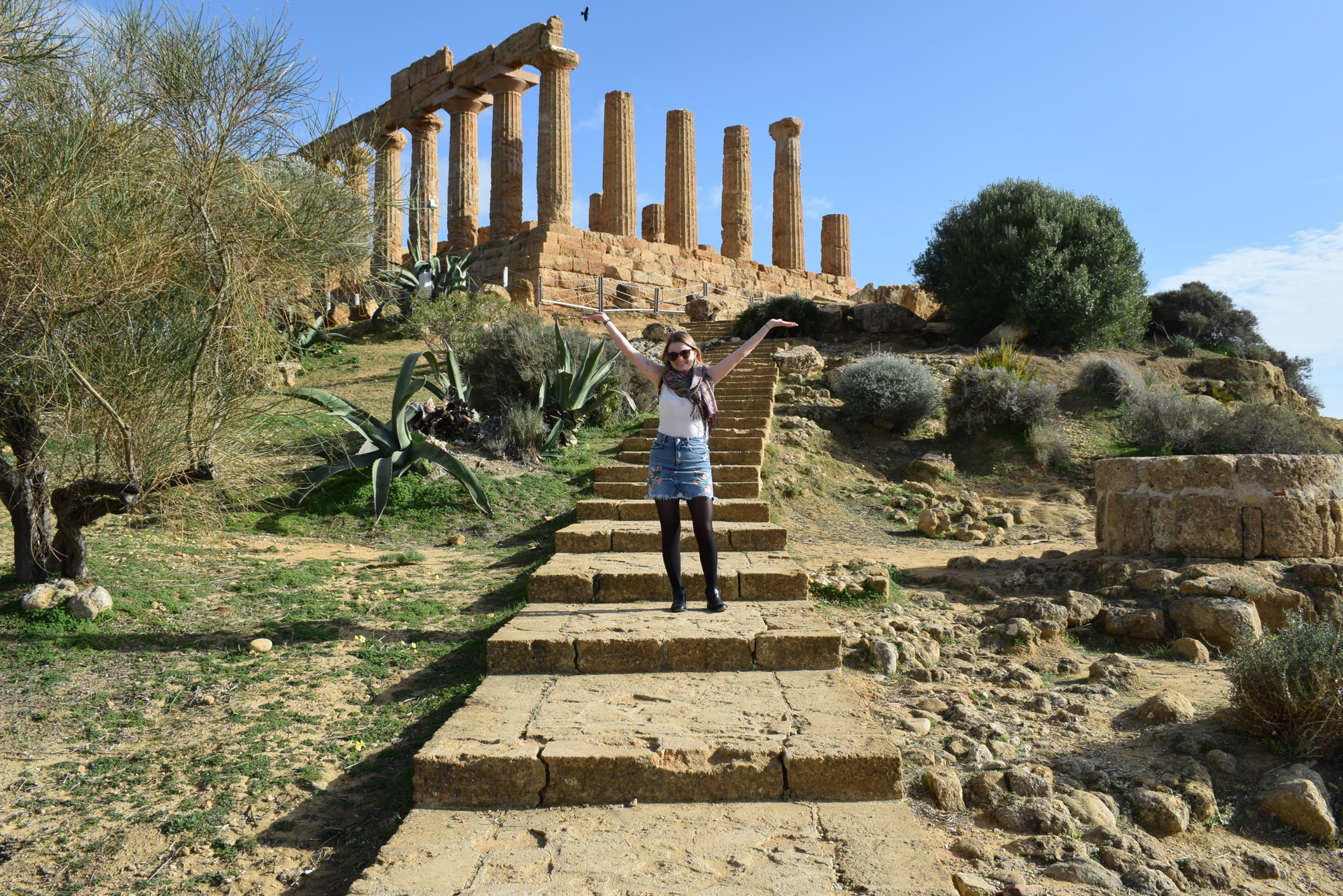
Unfortunately, I did not have enough time to visit the temple of Asclepius, the temple of Hephaestus and the regional archaeological museum of Pietro Griffo, where most of the artefacts from the Valley of the temples were displayed, but I hope that someday I will come back and make sure to visit them.
After a day full of strolling around this incredible archaeological site in Sicily I was full of positive emotions, fascination, excitement and satisfaction. The Valley of the Temples is one of those places that you will be in awe with. It is an absolutely remarkable place that I would recommend to everyone. Hopefully, one day I will have the chance to visit it again.
Photo gallery
Content available in other languages
Want to have your own Erasmus blog?
If you are experiencing living abroad, you're an avid traveller or want to promote the city where you live... create your own blog and share your adventures!
I want to create my Erasmus blog! →




















Comments (0 comments)